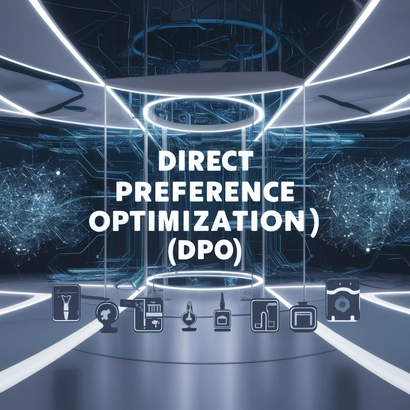DPO
Direct Preference Optimization (DPO) is a simplified and efficient approach to fine-tuning large language models (LLMs). It works by directly optimizing the model’s responses to human preferences, eliminating the need for a reward model and extensive sampling.
Areas of application
- DPO is based on the idea that the model can learn to optimize its responses to human preferences by directly comparing its outputs to the preferred responses.
- DPO uses a binary cross-entropy objective to measure the difference between the model’s outputs and the preferred responses.
- DPO can be used to fine-tune LLMs for a variety of tasks, including question answering, summarization, and chatbots
Example
- DPO is an alternative to Reinforcement Learning from Human Feedback (RLHF), which was previously the most common method for fine-tuning LLMs.
- DPO is simpler, more efficient, and more stable than RLHF.
- DPO is a two-stage process: supervised fine-tuning (SFT) and preference learning.
- SFT is the first step, where the model is fine-tuned on a dataset of interest.
- Preference learning is the second step, where the model is fine-tuned using preference data, which is a set of human-labeled examples of preferred and rejected responses.
- DPO is implemented using the DPOTrainer library from the TRL (Transformer Reinforcement Learning) library.
